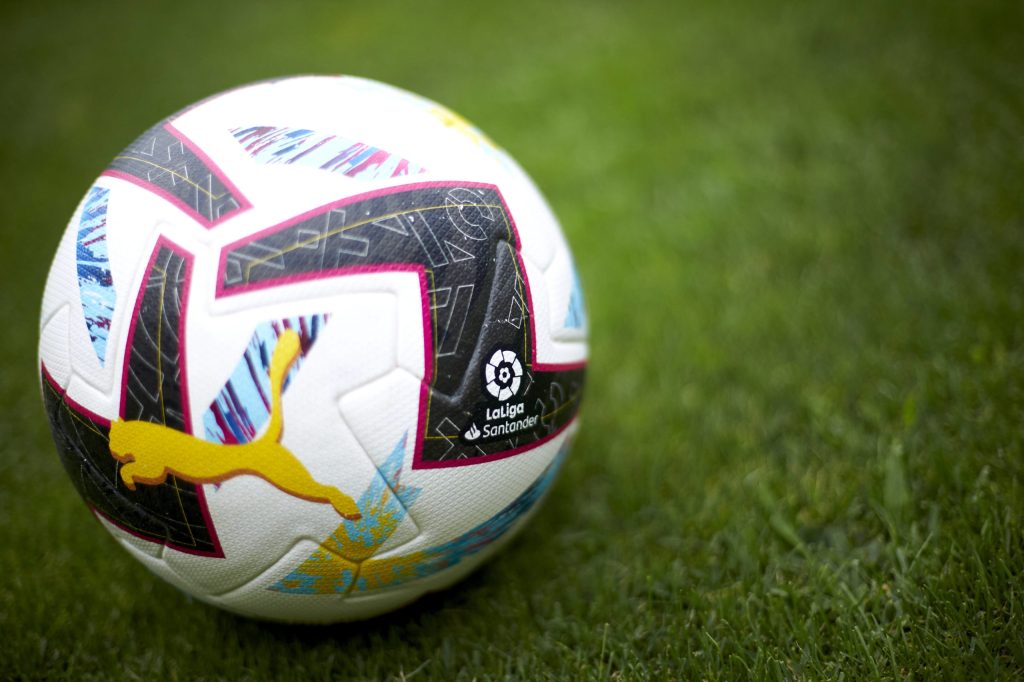Mexico has a great history of producing exciting players. From the ’70s to the ’90s it was Hugo Sánchez, and most recently star players have included Javier Hernández and Carlos Vela. All of these players started their careers in Mexico and went on to have successful stints in Europe.
Mexico have struggled in international tournaments, never passing the quarter-finals of the World Cup. Mexico will be keen to better this in years to come but will need the talent to do so. The Liga MX has a lot of talent to offer and it’s imperative they keep developing these players. Ultimately the Liga MX does not have the budget and structure as European leagues do, and therefore losing players to Europe is expected. The latest Mexican player to be linked with Europe is Sebastian Cordova. The 23-year old has been heavily linked with a number of clubs from Europe, including Manchester United, Real Betis and Benfica to name a few.
This data analysis will look to analyse how Córdova may fare if he is to get his move to Europe. Using analysis and statistics we will look to identify the Mexican’s best position, and then evaluate how he compares to his possible future counterparts.
Player profile
Córdova is an exciting young prospect, who is able to play in several positions. During the 2019/20 Liga MX season, Córdova played in five different positions, ranging from left-back to right-wing. However, it would appear Córdova is frequently used as a left-winger or attacking/central midfielder. Last season the 23-year old played eight games as a left-winger. He also played six games as an attacking midfielder and eight as a central midfielder.
 The heat map above gives a good indication of the type of player we are looking at. Despite starting over 50% of his games in a central position, we see that he often likes to drift out to the left-hand side. We can also see that he rarely takes up deep positions in the middle of the pitch.
The heat map above gives a good indication of the type of player we are looking at. Despite starting over 50% of his games in a central position, we see that he often likes to drift out to the left-hand side. We can also see that he rarely takes up deep positions in the middle of the pitch.
This would suggest that when even starting as a central midfielder, he plays in a much more advanced role. At 23, he may be looking to find a set position so he is really able to master his art. The first part of this analysis will use data and statistics to examine where Córdova is most productive.
Left-winger and attacking midfield are two very different positions, and therefore direct comparisons are difficult. In the analysis above we have aimed to analyse which position produces the most out of Córdova on a goals and assists basis.
The data would suggest that the Mexican is much more proficient as an attacking/central midfielder. As an attacking midfielder, Córdova achieves 0.2 goals per 90. When playing as a left-winger he has 0 goals per 90. Further to this, Córdova also has a higher xG value when playing as an attacking midfielder, with 0.13 per 90. As a left-winger, he only achieves an xG value of 0.07 per 90. Clearly, he has much more goal-scoring success as an attacking midfielder.
The story is also very similar when it comes to assists. As an attacking midfielder, he achieves 0.13 assist per 90, compared to 0 as a left-winger. His xA per 90 is much greater as attacking midfielder as well (0.12 vs 0.06).
This is not to say that Córdova is a poor winger, he may be very accomplished. However, the data suggests he is more productive as an attacking midfielder. Therefore, this analysis will focus on Córdova as an attacking/central midfielder.
The analysis below will use all the data from when he played as an attacking/central midfielder. The data will also only use players who have played over 1000 minutes in their respective leagues. Due to Córdova’s recent transfer links, the analysis will use attacking midfielders from the Premier League, Liga NOS and La Liga.
Game impact
The first section we will look at is the impact players can have on a game, through goals and assists.
The statistics above show Córdova maybe doesn’t perform as well as players in the other three leagues analysed. Córdova only has an xG of 1.98, one of the lowest in the analysis. Raúl García, Athletic Bilbao, leads the way in this one was an xG of 12.09. However, Córdova does have a higher xG than the majority of the other players from La Liga, marked in red. As well as García, Martin Ødegaard is the only other La Liga player to have a greater xG with 3.64.
The Premier League players also perform very well here. Dele Alli has the highest xG with 6.90, followed by Abdoulaye Doucouré with 5.17. Only a small number of players from the Premier League have a lower xG. Man United’s Jesse Lingard has an xG of 1.41 and Arsenal’s Mesut Özil has an xG of 1.37.
Córdova’s xG of 1.98 is only bettered by two players in Liga NOS. Bozhidar Kraev and Alberto Bueno have an xG of 4.75 and 3.24, respectively.
The data above also considers xA, as an attacking midfielder will not be expected to only score goals. Again, the young Mexican does not boast the greatest statistics with only an xA of 1.74. Whilst, not a huge amount, he betters a majority of La Liga, only beaten by Ødegaard again who had an xA of 5.76.
A high number of players from Liga NOS and the Premier League have much better statistics than Córdova, however. Brighton’s Pascal Groß has the highest xA with 6.09. The German is closely followed by Everton’s Gylfi Sigurðsson who has 5.76 xA.
Liga NOS are represented by the Brazilian, Lincoln, who plays for Santa Clara. The 21-year old has an xA of 5.60, the highest in the league for attacking midfielders.
Ball retention and progression
For any attacking midfielder, the ability to carry the ball forward and retain possession is key. As mentioned, Córdova often plays as a winger and drifts out wide, so this is a skill we expect him to be proficient in. The next part of the analysis will use data to examine Córdova’s dribbles and success when doing so.
The statistics show a good range of data with each league having different types of players. Firstly, Córdova has a high number of dribbles per 90 with 4.06. This is only beaten by two La Liga players, Aleix Febas and Martin Ødegaard who attempts 4.37 and 4.89 per 90, respectively.
Liga NOS would appear to be very low in this area, with all players attempting less than 4 dribbles per 90. The player to attempt the most dribbles in Liga NOS is again, Bozhidar Kraev, who attempts 3.10 per 90. This is much lower than the Mexican.
To add to this, all of the Premier League players analysed also attempt fewer dribbles than Córdova. The highest being Marco Stiepermann, Norwich City, with 3.87 per 90. Bruno Fernandes, who now plays for one of Córdova’s potential suitors, only attempts 1.89 dribbles per 90.
However, one discernible difference is the success of these dribbles. Córdova has one of the lowest dribble successes % with only 37.68%. Showing that he often loses the ball. Only Lucas Piazon boats a lower % with 36.36%.
Whilst Córdova attempts a high number of dribbles, keeping the ball and progressing the team is key. We mentioned that Bruno Fernandes, Manchester United, only attempts 1.89 dribbles per 90, however, he has the highest success with 72%. This is way above any other player.
Shots on goal
Attacking midfielders often differ in their approach. You have some that solely focus on creating chances and creating space for teammates. Others like to get forward and score goals as often as possible. Neither of these are the “right” way to play as an attacking midfielder. However, having an extra player that can take shots on causes different issues for opposition defences. The next part of the analysis will look at shots and shots on target.
The data above show an apparent trend in attacking midfielders. A majority of the players analysed have between one and two shots per 90. There are a few players who break this trend. Bruno Fernandes attempts 3.25 shots per 90. Showing he is the type of player who likes to get forward and score goals. On the other hand, we also have a number of players who attempt a low number of shots. Mesut Özil unsurprisingly only attempts 0.47 shots per 90. Özil is renowned for his chance creating ability and therefore is not surprising that he attempts a low number of shots.
Córdova fits in that usual trend, as he attempts 1.73 shots per 90. This seems fairly standard as other players from other leagues are very similar. Dele Alli also attempts 1.68 shots per 90, whilst Martin Ødegaard also only attempts 1.60.
However, the young Mexican really stands out here as he has the best shots on target % out of all the players analysed. Córdova has a shot on target % of 57.80%. The only other players to have over 50% are Lincoln and Aleix Febas. However, both of these players only attempt a low number of shots per 90, with 0.76 and 0.40 respectively.
When we look at the type of shots Córdova attempts, these statistics become even more impressive. The analysis above shows that 23-year old attempts shots from a large range of positions. Last season he attempted more shots outside than box than inside with 29 vs 25. Cordova was also more successful with these shots from outside the box, with 62.1% of them being on target. This is very impressive for an attacking midfielder to be so consistent from a range of areas. Despite on xG of 2.75, Córdova did score three goals in the Liga MX last season, however, goal conversion is something he will need to improve.
Final comparison
This analysis has looked at how Córdova compares to a number of players from European leagues. The final part of this analysis will examine how the Mexican compares to the league average in a range of different areas. This will help us to determine which league Córdova may be best suited to.
These metrics all look at how successful particular actions were by using the success %. A number of the metrics have already been analysed and a few look at different areas of the game.
Shots on target % – As discussed, this is an area Córdova is very strong in. His shots on target % of 57.80% is much higher than the average of the three other leagues. Liga NOS are the closest to Córdova with 41.27%. However, both the Premier League and La Liga average below 40%.
Dribble success % – Again, we have analysed this metric and saw that it is not one of Córdova’s strong areas. Whilst he attempts a high number of dribbles, his success is only 37.68%. This is much lower than all the leagues, as they all average above 50%. La Liga is slightly the highest with 51.11%. This is an area the Mexican must improve in if he is to move to Europe.
Pass accuracy % – This is an area we have not yet analysed; however, it seems Córdova fares quite well. The 23-year old averages a pass accuracy of 81.74%, greater than the average of the other three leagues. The other leagues are not far behind however, with only Liga NOS averaging less than 80% with 77%. It would seem that the Mexican would fit in quite well with his passing ability.
Through pass accuracy % – This is an area we have not yet analysed and is not a good one for Córdova. The other three leagues average over 30% accuracy in their through ball passes, with Liga NOS having 40.81%. However, the young Mexican is only successful in 15% of his through passes. Córdova does only attempts 0.4 per 90, however, he is way behind the big European leagues.
Passes to box accuracy % – And finally, we have another ball penetrating statistic to analyse. Once more Córdova is way behind the European leagues. The 23-year old only completes 31.08% of his passes into the box. Each of the league’s averages around 50%, with the Premier League having the greatest success with 55.01%.
Conclusion
This data analysis aimed to use data and statistics to determine Córdova’s best position and then aimed to examine how he would fit into some of Europe’s biggest leagues. The data shows that Córdova is very accomplished as an attacking midfielder and is much more productive here. However, he is able to play a range of positions. The data also shows that Córdova can mix with some of Europe’s finest players. The analysis did show that maybe the Mexican has areas of improvements, such as ball penetration into the box. However, he also shows glimpses that he could certainly add talent to one of Europe’s big teams.
Of course, the data only paints part of the picture and further analysis of the player would be required to fully understand the type of player he is.












